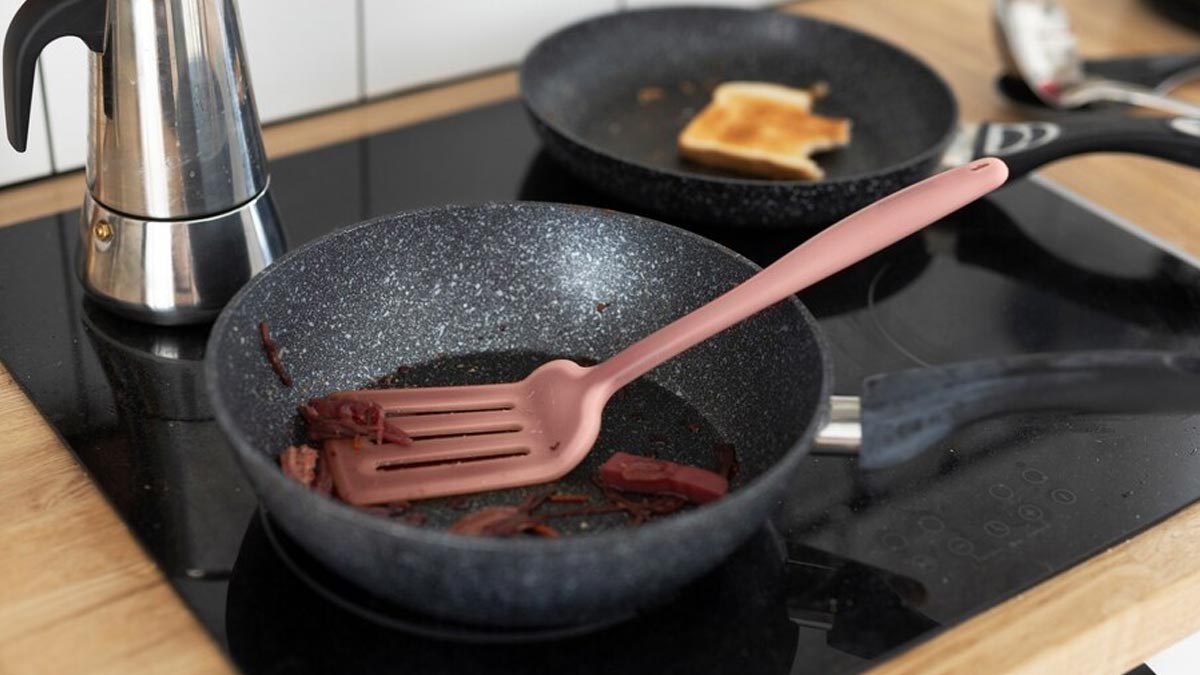
A recent report by the Washington Post suggests that US poison centres have received over 3,600 reports of Teflon flu in the last 20 years. Teflon flu, also known as polymer fume fever, is a flu-like illness caused by inhaling the byproducts released when fluorocarbons degrade at high temperatures, as per StatPearls Publishing. In simple terms, it is a temporary flu-like condition caused by inhaling fumes from overheated non-stick cookware coated with polytetrafluoroethylene (PTFE), commonly known as Teflon, explains Dr Manjeeta Nath Das, Consultant - Internal Medicine, Manipal Hospital, Dwarka.
Table of Content:-
In this article, we discuss some of the common symptoms associated with the condition and how we can safely use non-stick pans without exposing ourselves to danger.
Also Read: Why Is Stainless Steel A Necessary Ingredient In The Recipe For An Ideal Kitchen?
Common Symptoms Of Teflon Flu

"Teflon flu usually occurs when non-stick cookware coated with PTFE is heated above 500°F (260°C), releasing fumes that can irritate the respiratory system,” says Dr Das.
PTFE is a synthetic material known for its nonstick and heat-resistant properties. Commonly recognised by the brand name Teflon, PTFE is often used to coat cookware, making it easier to cook and clean.
Patients with polymer fume fever typically experience symptoms such as fever, malaise, difficulty breathing, chest tightness, and a dry cough.
According to Dr Das, these symptoms usually appear a few hours after exposure and can last for up to 48 hours.
It is also important to note that symptoms in humans generally do not begin until the material is heated to 350 °C (662 °F), as per a 2023 article published in StatPearls Publishing.
Also Read: Preventing Food-Borne Illness: FSSAI Tips For Safe And Healthy Meals At Home
How To Safely Use Non-Stick Pan

Research suggests using non-stick pans coated with PTFE is safe, given that you follow proper instructions and guidelines. Dr Das shares a few safety measures that can help. These include:
- Using low to medium heat and avoiding high temperatures to prevent fume release.
- Ensure proper ventilation; use exhaust fans or open windows while cooking.
- Avoid preheating empty pans; always have food or liquid in the pan.
- Use recommended utensils; avoid metal tools that can scratch the surface.
Conclusion
While non-stick cookwares make your lives much easier, they must be used with caution. Such utensils, particularly those coated with PTFE, pose potential health risks associated with overheating these materials, which can release toxic fumes leading to polymer fume fever, also known as Teflon flu. This condition, while usually causing temporary flu-like symptoms, highlights the need for proper use and ventilation when using non-stick cookware to prevent exposure. Safe cooking practices and maintaining awareness of these risks can help mitigate potential health issues associated with non-stick utensils.
Also watch this video
How we keep this article up to date:
We work with experts and keep a close eye on the latest in health and wellness. Whenever there is a new research or helpful information, we update our articles with accurate and useful advice.
Current Version